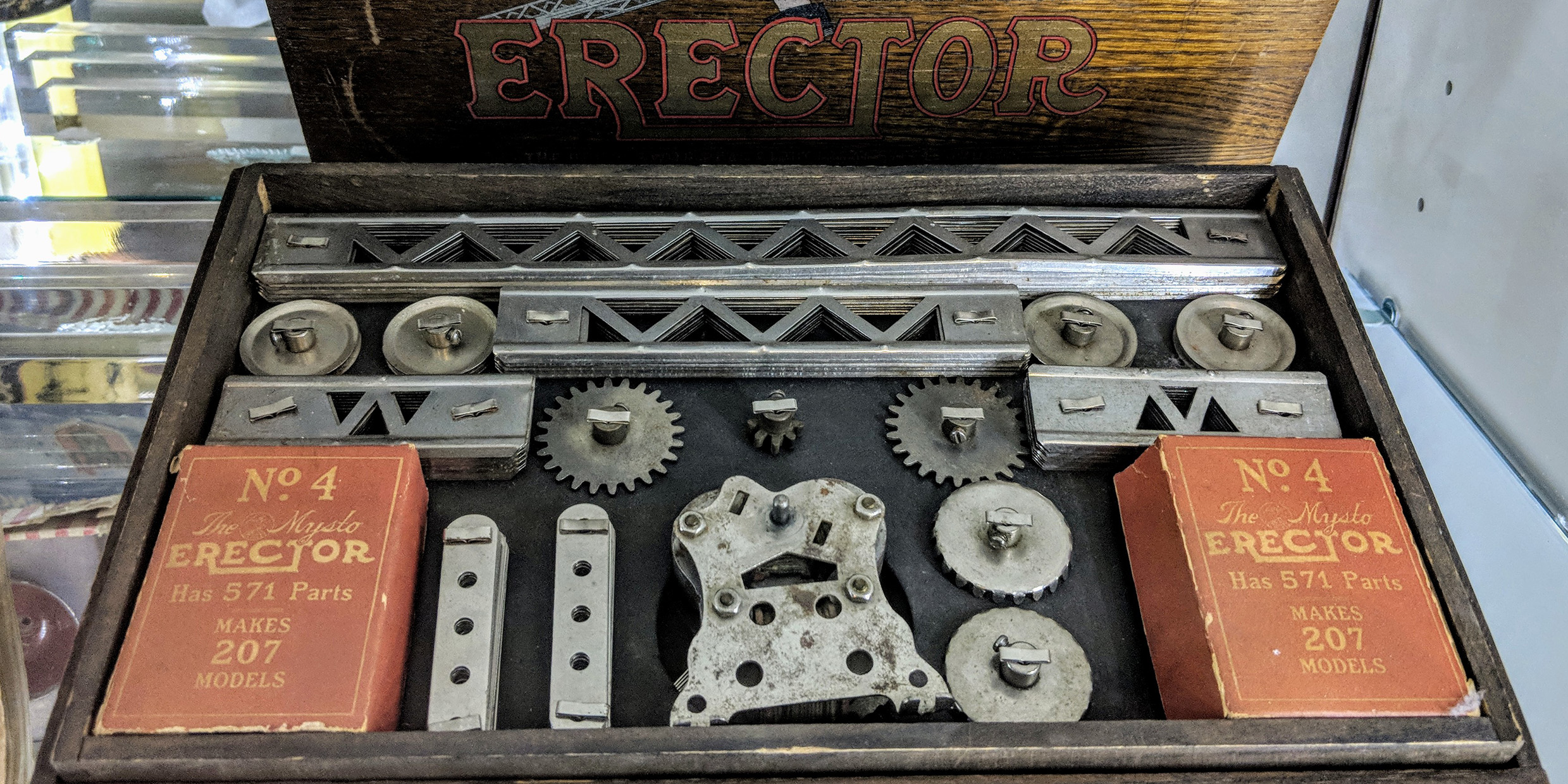Originally published 28 December 1987
I know it’s early to start thinking about next Christmas — this year’s celebrations are barely over — but I thought I should write while my thoughts are still fresh in my mind.
Every year, Santa, we see fewer science toys under the tree. You used to have a warm place in your heart for toys that were both educational and fun, but lately it seems you have sold out on toys that have any instructive content.
Back when I was a kid, it was every boy’s dream to own a Gilbert chemistry set, an Erector Set, and maybe a set of Lionel trains. These were the premier Christmas presents, top-of-the-line stuff, for the boys who had been very, very good. (As for the girls, I’ll get to them in a minute).
We learned from these toys, even as we had fun. Granted, all we ever did with the chemistry set was make stink bombs, and invisible ink, and flasks that popped and fizzed and scared the daylights out of our younger siblings, but at the same time we learned something about the way the world was put together.
We noticed how oxygen latches onto almost any element that gets in its way, rusting and burning. We noticed how carbon makes such a terrific skeleton for a whole bunch of nifty molecules. We noticed how Mother Nature’s recipe book is written in whole numbers. And most of the time we didn’t even notice that we were noticing something useful.
Putting things together
As for the Erector Set, boy, there was a toy that a kid could love and a mother could hate: hundreds of little screws and nuts to get spread all over the rug and rattle around in the Hoover. We learned a lot about mechanics from that toy, about levers, and centers of gravity, and gear ratios, and friction. Most of all we learned that it is more fun to put things together than to take them apart.
The electric trains that you put under our tree were more instructive than any of the motorized toys you distribute today. Things were less prepackaged in those days. We had to strip our own wires to make electrical connections. We had to understand the nature of a circuit or the trains wouldn’t run. And the transformers and rheostats that came with our Lionels were real, honest-to-God pieces of electrical machinery.
Sure, the thing that was most fun was to arrange a stupendous head-on collision between two speeding locomotives, but, let me tell you Santa, you made toys in those days that could take it.
I was down at the mall recently, in one of those toy stores that are as big as warehouses, to see what is currently available in sci-tech toys. Not much, it turns out. There were only half-a-dozen chemistry sets, tucked away at the back of the store with the wood-burning kits and metal-tapping kits, toys that were boring even when I was a kid.
Where are the science toys?
The entire display of science toys, including microscopes, telescopes, chemistry sets, and electronic kits, was a tenth of the size of the section given over to heavily-armed little male dolls with rippling muscles called “action men.” The way I look at it, there’s not a tenth of the action in one of those dolls than in a good old Gilbert’s test tube filled with water and bicarbonate of soda.
I did find Erector Sets, one or two of them on the back wall of the store, with a much larger pile of Robotix building sets (“Build Tyrannix, Terrokor Night Attacker”) and Legions of Power building sets (“Build a Universe of Battle Machines”). Even the Erector Set people have come out with something called Laser Erector (“Build the LaserPlex Combat Station”). I don’t know, Santa, I can’t help but feel that you might be losing sight of the meaning of Christmas.
One of the best technical toys on the market today is a Japanese invention called Capsela, a collection of motors and gears and electronics in transparent interconnecting spheres that let you see what’s happening even as you build exciting toys. I found one box of Capsela at our local toy emporium, and this in a store with two aisles full of toy guns.
Oh yes, there’s lots of high-tech in the toy store, but its hidden deep inside the toys, in the talking dolls, computerized cars, and laser death rays. The trouble with your new toys, Santa, is a kid sees what happens without ever knowing how it happens. And, of course, that’s one of the afflictions of our times: We have turned our lives over to machines that we don’t understand. It seems to me, Santa, that you could do a lot to remedy the situation by bringing back some of the old favorites from yesteryear.
And one more thing. It’s about time you recognized that science toys aren’t just boy toys. Many of my best students in science and engineering are young women, and that’s one thing that has changed for the better. You could encourage this trend by distributing the chemistry sets and electronics kits and telescopes more equitably among the girls and the boys. Get with it, Santa. There is no reason why girls who will choose careers in science and engineering should not be given an equal chance for a head start.



